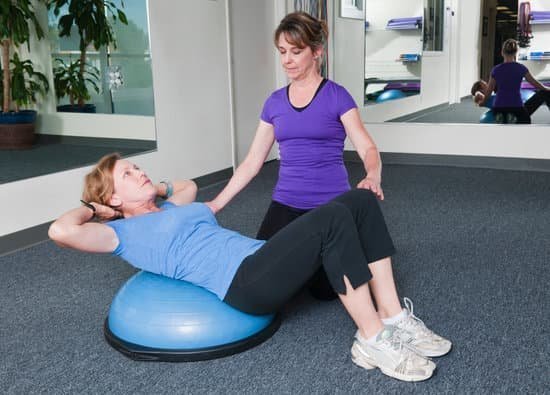Are you struggling to achieve your fitness goals? Do you often feel like you’re not making progress or don’t know where to start? In this article, we will discuss how to organize fitness goals, assess your current level of fitness, set SMART goals, create a personalized workout plan, track your progress, plan your nutrition, overcome obstacles, and celebrate success.
Setting and achieving fitness goals is essential for maintaining a healthy lifestyle. Whether you want to lose weight, gain muscle, or improve your overall health, having a clear plan in place can help you stay on track and motivated. By organizing your fitness goals effectively, you can set yourself up for success and make tangible progress towards a healthier and happier life.
In this comprehensive guide, we will explore the importance of organizing fitness goals and provide practical strategies for achieving them. From assessing your current level of fitness to overcoming obstacles and celebrating success, this article will equip you with all the tools necessary to take charge of your fitness journey. So let’s get started on the path to better health and well-being by learning how to effectively organize our fitness goals.
Assessing Your Current Fitness Level
- Self-assessment: Take stock of your current physical condition, including aspects such as strength, endurance, flexibility, and overall health. Consider factors such as weight, body measurements, and overall wellness.
- Fitness tests: Consider performing standard fitness assessments such as the push-up test, sit and reach test (flexibility), timed runs or walks (cardiovascular endurance), and weight lifting benchmarks to gauge strength.
- Professional guidance: Seek the help of a qualified fitness professional who can conduct a comprehensive assessment of your fitness level through tests and evaluations that provide more accurate data about your current capabilities.
By taking these steps to assess your current fitness level, you will be better equipped to set realistic and achievable goals for yourself. Understanding where you stand now will allow you to chart a clear path forward towards improved health and wellness.
Remember, everyone’s starting point is different. It’s crucial not to compare yourself to others but rather focus on improving from where you are right now. Once you have a clear understanding of your starting point, you’ll be ready to move on to the next step: setting SMART goals for your fitness journey.
Setting SMART Goals
Setting fitness goals is an essential part of establishing a successful workout routine. By setting specific, measurable, achievable, relevant, and time-bound (SMART) goals, individuals can effectively track their progress and stay motivated on their fitness journey.
Specific Goals
When establishing fitness goals, it’s important to be specific about what you want to achieve. Instead of saying “I want to lose weight” or “I want to get in shape,” try setting a specific goal such as “I want to lose 10 pounds in the next three months” or “I want to be able to run a 5k race within six months.” Specific goals provide clarity and direction for your fitness journey.
Measurable Goals
Measuring progress is crucial for staying on track with your fitness goals. Whether it’s tracking the number of pounds lost, increasing the amount of weight lifted in strength training, or improving your running time, having measurable benchmarks will help you gauge your progress and make adjustments as needed.
Achievable and Relevant Goals
It’s important to set fitness goals that are both attainable and relevant to your overall well-being. Setting unrealistic goals can lead to discouragement and frustration. Assess your current fitness level and consider any limitations or constraints you may have before setting ambitious goals. Additionally, ensure that your fitness goals align with your overall health objectives.
Time-Bound Goals
Lastly, setting a timeframe for achieving your fitness goals provides a sense of urgency and accountability. Whether it’s aiming to reach a certain milestone within three months or completing a specific number of workouts per week, establishing time-bound goals will keep you focused and motivated on the path toward success.
By following the SMART framework when organizing fitness goals, individuals can create realistic objectives that are tailored to their personal needs while staying accountable and motivated throughout their wellness journey.
Creating a Workout Plan
- Determine Your Fitness Goals: Before creating a workout plan, it’s essential to have a clear understanding of your fitness goals. Whether you aim to build muscle, lose weight, improve endurance, or enhance overall health, defining your objectives will guide the structure of your workout plan.
- Schedule Your Workouts: Once you have identified your fitness goals, the next step is to schedule your workouts accordingly. Determine how many days per week you can dedicate to exercise and what times work best for you. Consistency is key when it comes to sticking to a workout plan, so choose realistic workout days and times that fit into your regular routine.
- Choose the Right Exercises: Based on your fitness goals and preferences, select a variety of exercises that target different muscle groups and cardiovascular endurance. Include strength training, cardio workouts, flexibility exercises, and any other activities that align with your fitness objectives.
By organizing your fitness goals through a well-designed workout plan, you can stay focused and motivated on your journey towards improved health and physical well-being.
Tracking Progress
As you work towards achieving your fitness goals, it’s important to track your progress to ensure that you are on the right path. There are various tools and techniques that can help you monitor your fitness achievements effectively.
One of the most common methods is keeping a workout journal, where you record details of your exercises, sets, reps, and any other relevant information. This not only helps you keep track of your workouts but also allows you to look back and see how far you’ve come.
Another popular tool for tracking fitness progress is wearable fitness technology such as activity trackers and smartwatches. These devices can monitor your heart rate, the number of steps taken, distance traveled, and even quality of sleep. By analyzing the data collected by these devices, you can gain valuable insights into your overall fitness level and make necessary adjustments to your workout routine.
Furthermore, utilizing body measurements and progress photos can provide visual evidence of the changes happening in your body as a result of your fitness journey. This can be a great source of motivation and a tangible way to see the results of your hard work. By incorporating these tools and techniques into your fitness regimen, you’ll be able to monitor your progress more effectively and make informed decisions about how to adjust or modify your goals accordingly.
| Tracking Tool | Benefits |
|---|---|
| Workout Journal | Keeps track of exercise details; allows for reflection on progress. |
| Wearable Fitness Technology | Monitors various health metrics; provides valuable insights into overall fitness level. |
| Body Measurements & Progress Photos | Provides visual evidence of physical changes; serves as a source of motivation. |
Nutrition and Meal Planning
When it comes to achieving your fitness goals, one of the most important aspects to consider is your nutrition and meal planning. No matter how intense your workouts are, if you don’t have a proper diet, your fitness journey will be hindered. Here’s how to organize fitness goals when it comes to nutrition and meal planning.
First and foremost, it’s essential to assess your current eating habits. Take note of what you typically eat in a day and identify areas that need improvement. Look at your macronutrient intake – are you getting enough protein, carbohydrates, and healthy fats? Are you consuming too much sugar or processed foods? Understanding where you currently stand with your diet will help you make necessary changes.
Once you’ve assessed your current eating habits, the next step is to set SMART goals for your nutrition. This means establishing specific dietary targets that are measurable, achievable, relevant to your fitness journey, and time-bound. For example, perhaps you want to increase your protein intake by 20 grams per day or cut back on sugary snacks during the week. Setting clear objectives will give you a roadmap towards better nutrition.
In addition to setting SMART goals, creating a meal plan can significantly support your fitness journey. By prepping your meals in advance and having healthy options readily available, you’ll be less likely to reach for unhealthy choices when hunger strikes. Be sure to include a balance of lean proteins, complex carbohydrates, and colorful fruits and vegetables in each meal.
Remember that proper hydration is also crucial for overall health and fitness success – aim for at least eight glasses of water per day. By organizing a well-rounded meal plan that aligns with your fitness goals, you’ll set yourself up for success in reaching those objectives.
| Nutrition & Meal Planning Tips | Description |
|---|---|
| Assess Your Current Eating Habits | Identify areas needing improvement in diet. |
| Set SMART Nutrition Goals | Create specific dietary targets that are measurable and achievable. |
| Create a Meal Plan | Include balanced meals with proteins, carbohydrates, fruits & vegetables. |
Overcoming Obstacles
Identifying Potential Obstacles
When it comes to achieving fitness goals, it is important to anticipate and identify potential obstacles that may arise along the way. These obstacles can be anything from lack of motivation, busy schedules, or even personal challenges such as self-doubt or fear of failure. By recognizing these potential roadblocks, you can better prepare yourself to overcome them and stay on track with your fitness journey.
Staying Motivated
Staying motivated is crucial when working towards your fitness goals. One effective strategy for staying motivated is to regularly remind yourself of why you set these goals in the first place. Whether it’s to improve your overall health, boost your confidence, or simply feel better about yourself, keeping these reasons at the forefront of your mind can help you stay focused and driven.
Another effective method for staying motivated is by surrounding yourself with a supportive community. This can be joining a fitness group or finding an accountability partner who shares similar goals. Having others to lean on during challenging times can provide the encouragement and support needed to push through any obstacles that may come your way.
Overcoming Challenges
Inevitably, challenges will arise as you work towards your fitness goals. When faced with setbacks, it’s important to remain flexible and adaptable. If an injury occurs or life circumstances change, adjusting your workout plan or seeking alternative methods for staying active can help you continue moving forward. Additionally, practicing self-compassion and being patient with yourself during challenging times is essential for maintaining a positive mindset while overcoming obstacles in achieving your fitness goals.
Celebrating Success
In conclusion, organizing fitness goals is a crucial component in successfully achieving your desired level of health and wellness. By following the steps outlined in this article, individuals can create a comprehensive plan that encompasses assessing their current fitness level, setting SMART goals, creating a workout plan, tracking progress, establishing a nutrition and meal plan, overcoming obstacles, and celebrating success.
Each of these steps contributes to the overall journey towards improved physical well-being and should be approached with dedication and perseverance.
One of the most important aspects of organizing fitness goals is understanding the significance of celebrating success along the way. Recognizing and rewarding milestones not only provides individuals with positive reinforcement for their hard work but also serves as motivation to continue pursuing their fitness goals. Be it achieving a new personal record in running or reaching a target weight, acknowledging these accomplishments can boost confidence and drive to keep pushing forward.
Additionally, celebrating success can take many forms – whether it’s treating yourself to a healthy reward such as a relaxing massage or taking time off to rest and rejuvenate after reaching a significant milestone. This reinforcement can help individuals maintain the momentum needed to stay committed to their fitness journey over the long term.
In doing so, it not only supports physical health but also contributes to overall well-being and happiness. Ultimately, by understanding how to organize fitness goals and incorporating celebrations along the way, individuals can set themselves up for long-term success in their pursuit of improved health and wellness.
Frequently Asked Questions
How Do You Set Up Fitness Goals?
Setting up fitness goals involves a few key steps. First, you need to identify what you want to achieve, whether it’s weight loss, muscle gain, or improved endurance. Then, you should make your goals specific, measurable, and realistic. It’s also important to set a timeline for reaching your goals and track your progress along the way.
How Do You Decide What Your Fitness Goals Should Be?
Deciding on your fitness goals requires some self-reflection and honesty about what you want to achieve. Consider your current fitness level and any health concerns, as well as your personal interests and motivations. Your goals should be tailored to your individual needs and priorities, whether that’s running a marathon or simply improving flexibility.
How Do I Create a Workout Plan for My Goals?
Creating a workout plan for your fitness goals begins with identifying the types of exercise that will help you reach those specific goals. For example, if you’re aiming for muscle gain, you’ll want to incorporate strength training into your plan.
If it’s weight loss, a combination of cardio and resistance training may be more effective. Once you have the right exercises in mind, plan out the frequency and duration of each workout session to ensure steady progress toward your goals.

Passionate about providing useful information to anyone with an interest in the field of Personal Training, I strive to pass on to our readers quality information and to answer any questions about Personal Trainers, the work they do and how to become one.





